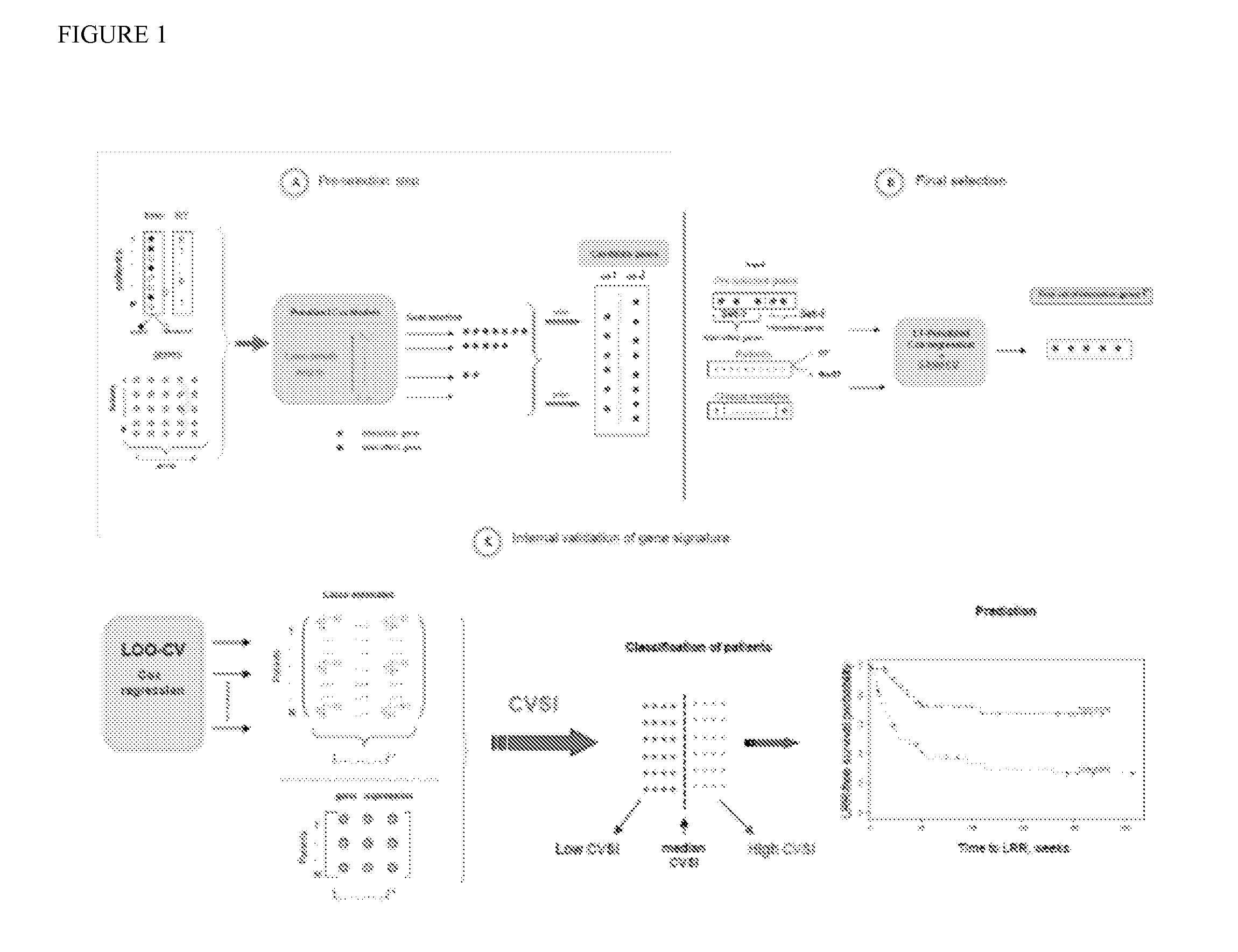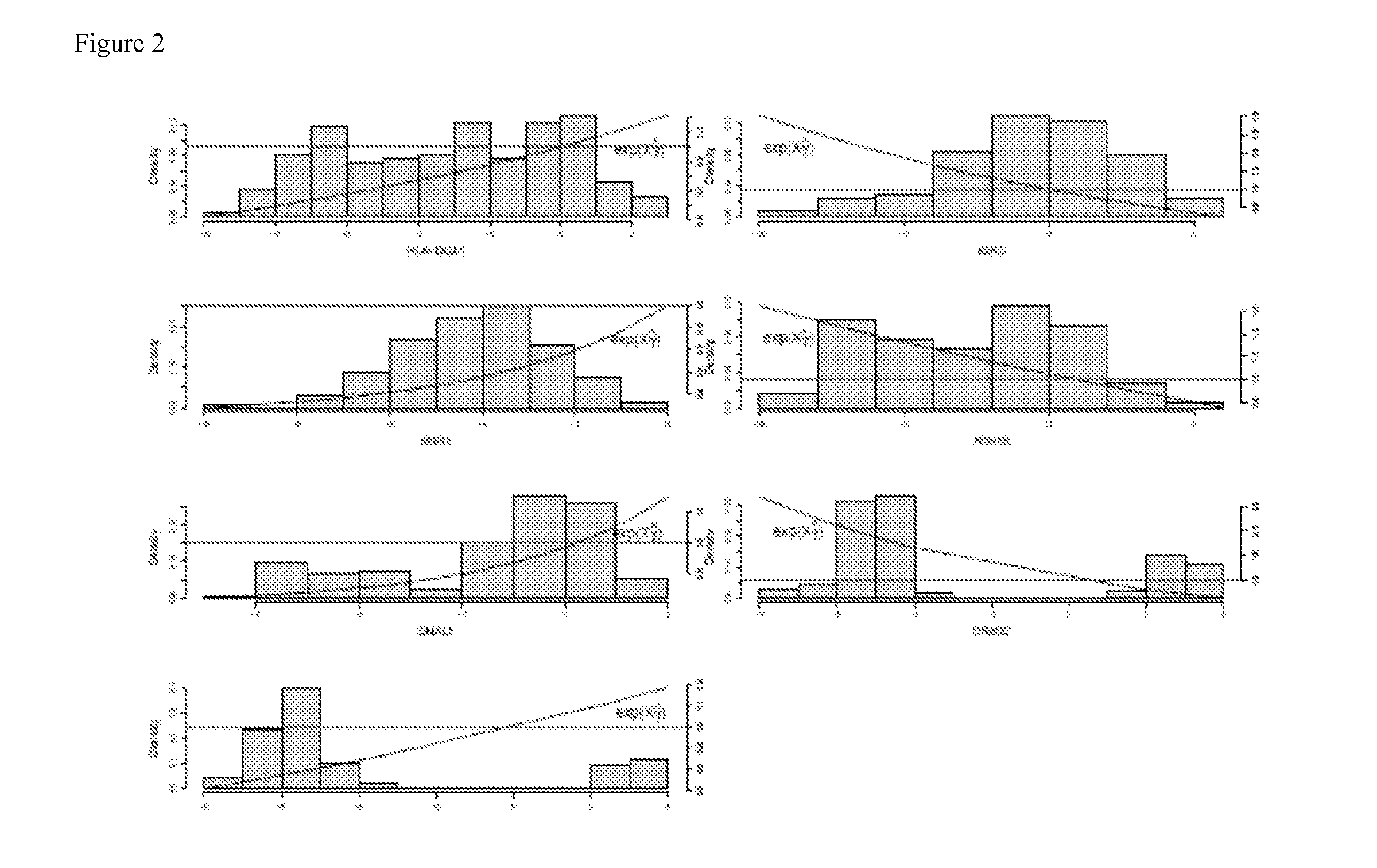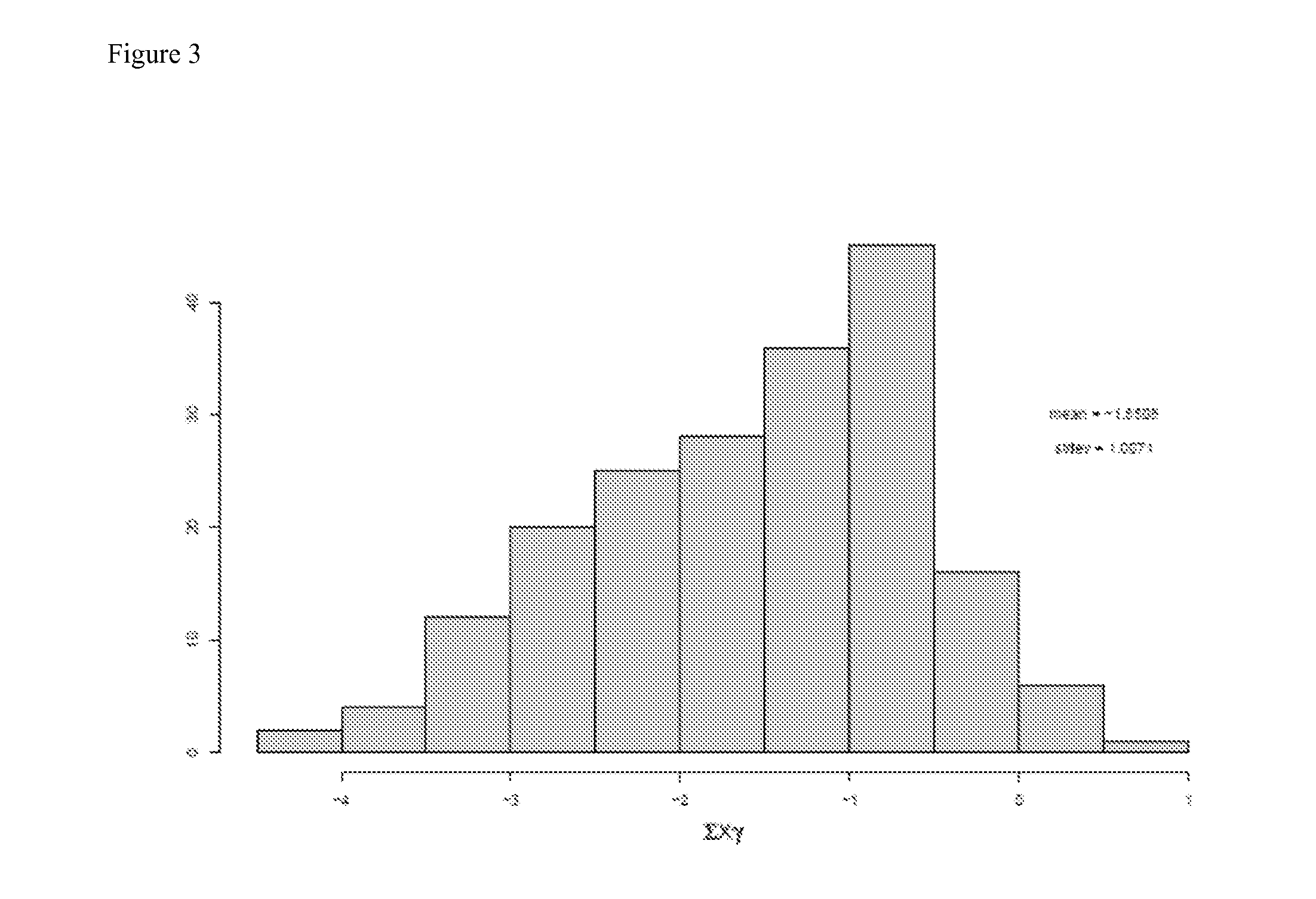Gene signatures associated with efficacy of postmastectomy radiotherapy in breast cancer
a gene signature and breast cancer technology, applied in the field of gene expression signatures, can solve the problem of increasing the risk of local recurrence of breast cancer
- Summary
- Abstract
- Description
- Claims
- Application Information
AI Technical Summary
Benefits of technology
Problems solved by technology
Method used
Image
Examples
example 1
Material and Methods
The DBCG82bc Cohort
[0129]The DBCG82 trial explores the indication for post mastectomy radiotherapy (RT) to high-risk patients. Part of the study included 3083 women surgically treated for high-risk breast cancer (DBCG82bc). After mastectomy, the premenopausal women (DBCG 82 b) were randomized to receive cyclophosphamide, methotrexate and 5-fluorouracil (CMF) chemotherapy (8 cycles)+RT, or CMF only (9 cycles). The postmenopausal women (DBCG 82 c) were randomized to receive either Tamoxifen (30 mg daily for 1 year)+RT, or Tamoxifen only. The addition of PMRT improved overall survival by approximately 10%, and resulted in an 80% reduction of loco-regional recurrences (LRR), with no significant late side-effects [8, 9]. Later studies of the same cohort, with 18 years of follow-up, concluded that fewer patients experienced LRR and / or distant metastasis [10], and a subgroup analysis of 1152 node positive patients showed that the survival benefit from RT was similar in ...
example 2
Distribution of the Gene Index Across Groups of Clinical Variables
[0146]The two index groups (high and low) could be identified in all relevant clinic-pathological subgroups (tumorsize, malignancy grade, estrogen receptor status, HER2 status, age / menopausal status) (Table 5). Except for estrogen receptor status, there was no significant difference in the distribution of clinico-pathological variables, including nodal status, between the index groups. For all subgroups, except estrogen receptor negative tumors, the distribution of the two index groups was split approximately on the quartile. This indicates that the index is independent of conventional prognostic factors.
[0147]In general, the gene index retained the predictive value across the various clinical parameters. The index was found be predictive regardless of nodal status, when looking at the low index patients (FIG. 1). Nodal status is presently a key parameter in treatment decision process regarding postmastectomy radiothe...
example 3
Validation of Signature in New Preparation Type and on New Platform
Same Cohort of Patients
[0148]In the original cohort, the signature was developed based on RNA extracted from frozen tumour biopsies and gene expression was measured using the Applied Biosystem Human Genome Survey Microarray.
[0149]A separate, corresponding part of the same tumour was available as formalin-fixed paraffin-embedded (FFPE) tissue from 158 patients in the original cohort. RNA was extracted from FFPE tissue and converted to cDNA, cDNA was pre-amplified using gene-specific primers, analyzed by qPCR, and normalized to four reference genes as described (Tramm T, Sorensen B S, Overgaard J, Alsner J. Optimal reference genes for normalization of qRT-PCR data from archival formalin fixed, paraffin embedded breast tumors controlling for tumor cell content and decay of mRNA. Diagn Mol Pathol, in press, 2013). Four of the signature genes were analyzed (IGKC, RGS1, DNALI1, ADH1B). All four reference genes and at least...
PUM
| Property | Measurement | Unit |
|---|---|---|
| size | aaaaa | aaaaa |
| time | aaaaa | aaaaa |
| size | aaaaa | aaaaa |
Abstract
Description
Claims
Application Information
 Login to View More
Login to View More - R&D
- Intellectual Property
- Life Sciences
- Materials
- Tech Scout
- Unparalleled Data Quality
- Higher Quality Content
- 60% Fewer Hallucinations
Browse by: Latest US Patents, China's latest patents, Technical Efficacy Thesaurus, Application Domain, Technology Topic, Popular Technical Reports.
© 2025 PatSnap. All rights reserved.Legal|Privacy policy|Modern Slavery Act Transparency Statement|Sitemap|About US| Contact US: help@patsnap.com



